They might come with a heavy price tag and they may not be everyone’s equipment of choice, but airbags, both in packs and vests, can be a lifesaving piece of gear in a worst-case scenario.
Editors’ Choice: Safeback x Db Snow Pro Vest with SBX
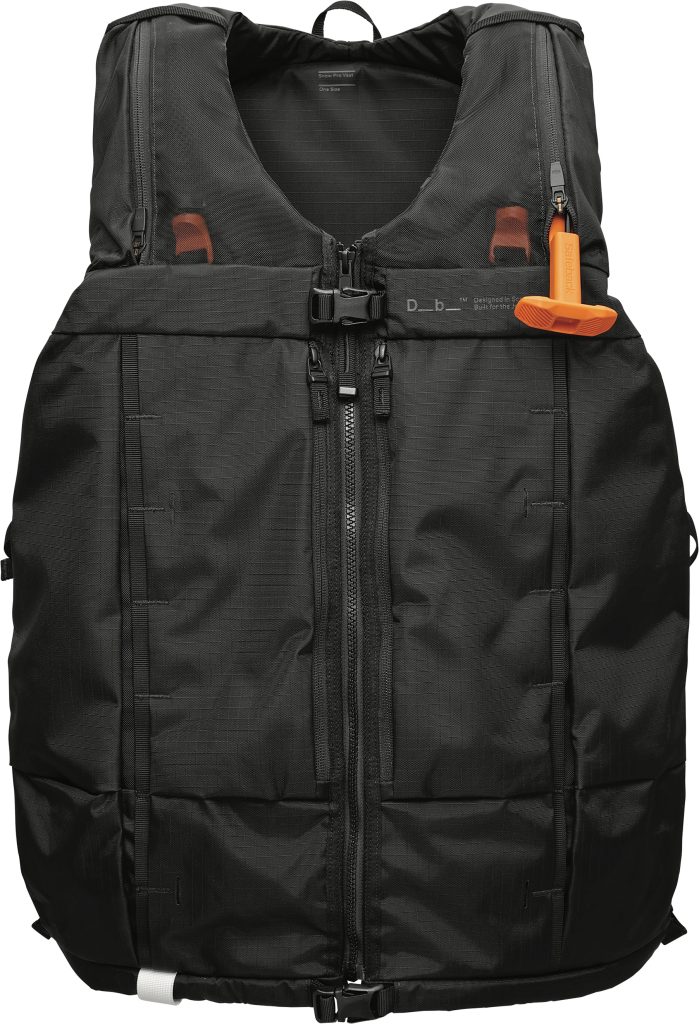
Anyone who has taken an avalanche course has likely been told about the golden 15-minute period after a burial. This is when expelled carbon dioxide starts to dilute oxygen levels in the snow around a victim or creates an ice mask that restricts the flow of fresh air, dropping the probability of survival exponentially.
Safeback wants to increase survival time and save lives with its new 17-ounce SBX system. Coming out for winter 2023/24, the SBX features a fan that draws air from a buried person’s back and pumps it through a pair of tubes integrated into the straps of a backpack or vest to the area near the victim’s face. A T-handle, like the ones used in airbag packs, activates the system, which is powered by six AA batteries and can last 90 minutes at minus 22 degrees on a full charge, according to the manufacturer.
“It’s intuitive for anyone who has practiced with an airbag,” our tester said. Safeback says its research shows the SBX can increase the survivability drop-off threshold from 15 minutes to 90, though results from an independent scientific study won’t be available until later this year. Our tester, who didn’t actually bury himself to evaluate the product, still felt a sense of confidence.
The Safeback SBX will be available in an eight-liter vest made by Db and a 40-liter backpack made by Bergan’s of Norway. We tested the vest, which has a single main compartment with avalanche tool sleeves and two large chest pockets that include fabric separators for gear, though our tester would have preferred multiple zippered pockets. He was able to pack everything for a tour into the vest, he said, but “it’s best for resort-accessed backcountry and short days.”
Safeback is already looking toward the future. Though no airbag packs are currently certified to integrate the SBX into, the trigger has space for an airbag wire to be added, creating the potential that a single pull could deploy both the SBX and an airbag. “I would be very excited about that,” our tester said. “My preference would be to not get caught in an avalanche, but having both trauma protection and clean air would make me feel a lot better if it ever happens.”
Where to buy
Backcountry Access Float 35 E2
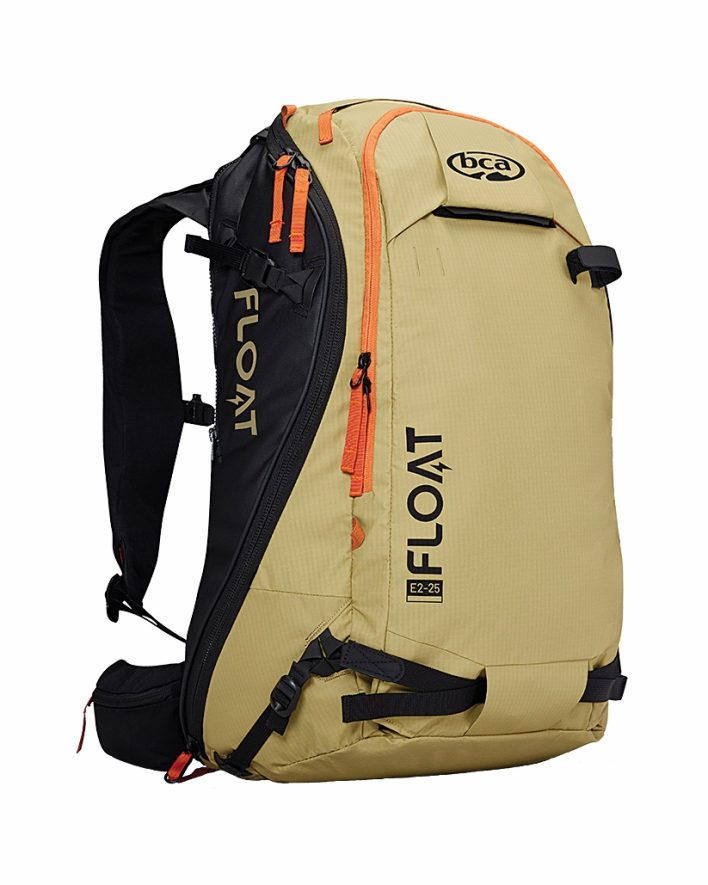
The rechargeable E2 system uses supercapacitors that release magnetic energy to inflate the balloon and are straight out of Back to the Future. When combined with Backcountry Access’s Float 35 bag, which features next-gen pockets and a sleek, stylish shape, it could be Marty McFly’s favorite airbag pack. “An interesting bottom compartment that is clever,” said our tester, speaking of the Stash Pocket. It’s designed to be accessible when the pack is still on, making it an ideal spot for skins, a water bottle or snacks. He noted the pocket was difficult to access when the pack was full and added that, even in the small/medium size, the torso felt long. The outer material is polyurethane-coated nylon Ripstop, and the beefy zippers are coated with durable waterproof repellant, meaning the Float 35 E2 is as watertight as it gets. “Carrying an airbag into the backcountry used to be a difficult compromise of weight and space for safety,” our tester concluded. “Not anymore, this new Float pack is lighter and more spacious than previous bags.”
Where to buy
Deuter Alproof 30 SL

The Deuter Alproof 30 SL harmoniously blends safety, performance and comfort. “The Alpride E2 Airbag System is a gamechanger,” our tester said, praising the rechargeable system, which eliminates the need for compressed-air canisters and allows multiple deployments in a single tour. Comfort was top notch; our slender, 5’7” female tester applauded the wide, weight-dispersing shoulder straps, adjustable sternum strap and padded hip fins. The pack provides plenty of storage, too, with an easily accessible avy gear pocket and a main compartment that “opens like a book with lots of space for skins, layers, food, water and more.” She also praised the helmet-carry system—a full helmet bag that straps snugly to the pack’s exterior—as “very sturdy.” Her one qualm was the difficulty in figuring out the diagonal carry, though once she found the straps, it worked great. “Excellent for consistent tours where you want extra safety,” our tester said. “It’s light and spacious, but not too bulky. Plus, it fits a woman’s size well.”
Where to buy
Dakine Poacher RAS 26L
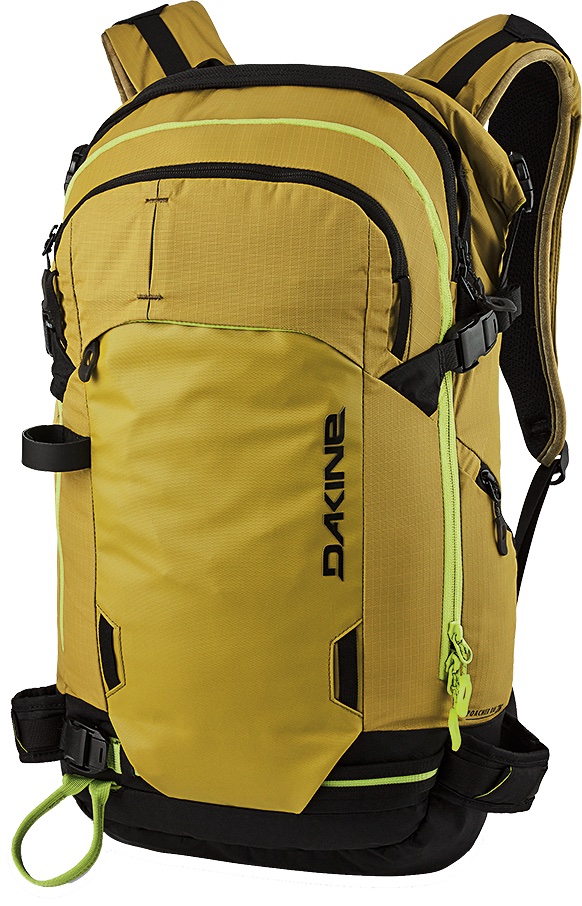
Compact but mighty, the Dakine Poacher RAS 26L dazzles with storage options. “Lots of pockets … lots of space for organization,” our tester praised, complimenting the slim compartments—one with sleeves for avalanche gear and the other to store shed layers, skins and some snacks. The pack itself doesn’t come with an airbag system but is designed to be used with Mammut’s Removable Airbag System 3.0 ($450). The DIY airbag pack was a bit of a brain teaser to set up, but “this price point is worth a little extra effort,” our tester emphasized. There was a hiccup in deploying the airbag on the first try, but we’re chalking that one up to a faulty canister. Issues also surfaced around the pack’s fit: “Stiff as a board and seemingly tailored for Sasquatch,” our 5’7” female tester joked, though our male tester (6’4”) found it comfortable. Despite some quirks and fit challenges, the Dakine Poacher RAS 26L impresses with its storage capacity, functionality and affordability.
Where to buy
Arva Equipment Ride Vest 15+
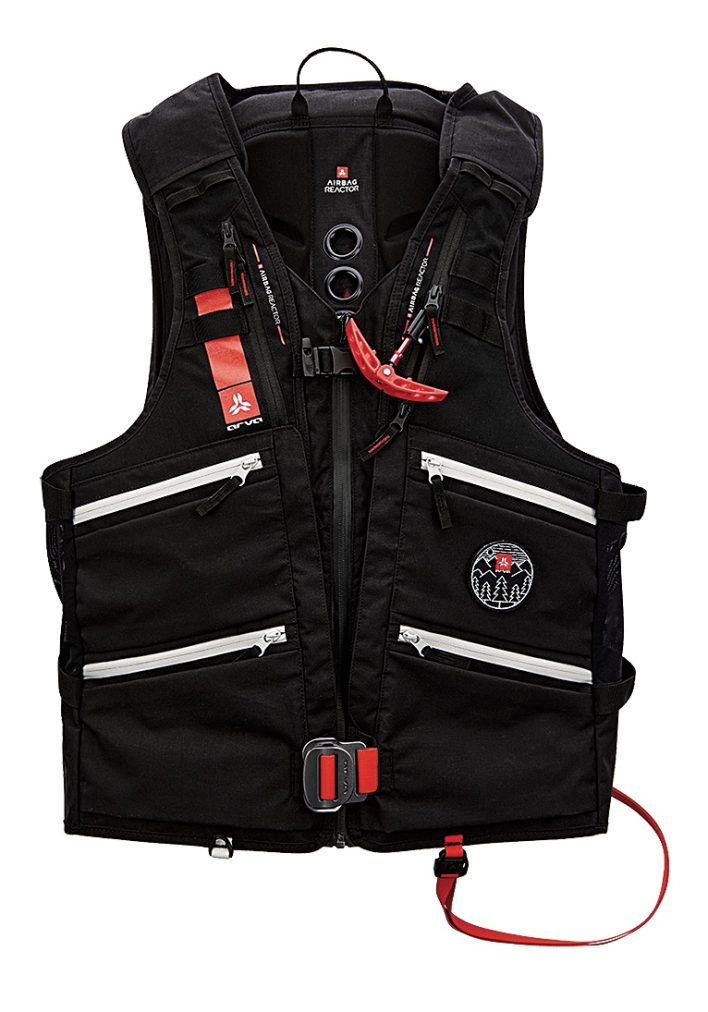
Once the province of ski patrollers, vests have become more common in the backcountry, and Arva’s Ride Vest 15+ is a feature-riddled option, our tester reported. “Avy tools pocket, expandable main compartment, several thoughtful chest pockets, heavy-duty, yet comfy fabric. What more could I need?” he asked. Sliding a circumferential zipper increases the Ride’s 15-liter capacity to 22 liters, and, when filled, the carbon-fiber canister is roughly half the weight of many of its peers at 370 grams. “It’s not big enough to be my only pack,” our tester said, “but I’d use it for snowmobile-assisted days, resort-accessed backcountry and shorter tours.” However, the removeable Reactor 2.0 airbag system can be used in other Arva packs, so the vest could easily be part of a quiver. As a snowboarder, he especially liked the integrated carry straps for decks, and, after some time hunting for the shoulder strap adjustments, he found he could dial in the fit exceptionally well for a one-size-fits-all pack.
Where to buy
These reviews were originally published in Issue No. 153. To read more, pick up a copy at backcountry magazine.com/153, or subscribe to read our gear reviews earlier when they are published in print.
*Affiliate link disclaimer:
At Backcountry Magazine, we are committed to providing you with honest and informative gear coverage. To support our work and continue delivering quality content, we are including affiliate links in our reviews. Partnerships with retailers are separate from coverage, ensuring that our reviews remain unbiased. These links help us earn a small commission if you make a purchase through them, at no additional cost to you.


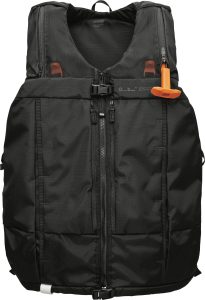
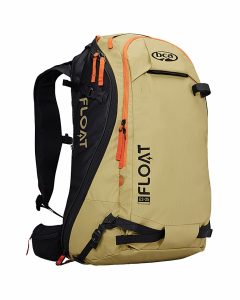
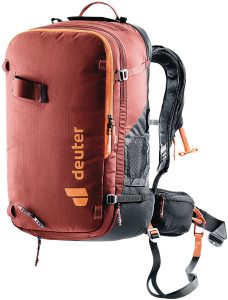
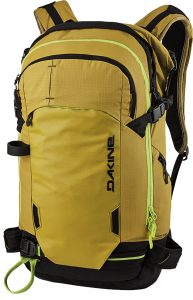
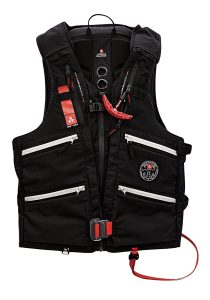








Can Sean Prentis write a detail article about the first time he dropped a knee?